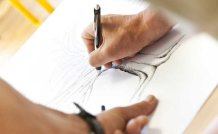Online Class: Watercolor Painting 101

no certificate
with CEU Certificate*
-
11Lessons
-
19Exams &
Assignments -
3,561Students
have taken this course -
9Hours
average time -
0.9CEUs
Course Description
In this course you will learn the basics of one of the most enduring art forms in our culture: watercolor painting. It is the easiest way of expressing yourself through art and has a long history of teaching great painters their first lessons in subjects ranging from proper technique to design principals. Most books and courses out there demand a large amount of self-study and miss the point of learning to paint--to have fun! Included in the course are tips from professional painters, examples of some of the great watercolor work ever created, and instructions that can take you from never having picked up a brush to completing your first full painting in no time. It is also sure to make sure you learn the right things at the right time, and that you have time to let the knowledge soak in before rushing off to the next concept.
We'll make sure you aren't intimidated by the long aisles of the art supply store stacked with thousands of different types of paint, brushes, and other tools. You'll be able to talk the talk as well as walk the walk as we share the meaning behind things like the "belly-width" of your brush or the "value" of your paint. You'll be able to share your gift with others in no time, and become a part of an international community of artists going back hundreds of years. Whether you are just looking for something new to do in your spare time or perhaps starting a new career, this course is developed for you.
Course Motivation
Watercolor is the first form of art that many new artists come across. Watercolor kits are much cheaper than gathering the expensive vials of paint and easier than learning how to mix the perfect set of hues into the color you need when it comes to oil painting. In fact, most elementary school art programs will see each child pick up a brush at least once, soaking it in water, brushing it along little tablets of color, and dabbing the brushes against a thick piece of construction or cold press textured paper. Here young children produce their first tree, their first bird, their first portrait of a friend, before terms like "subject" or "still life" enter the fray.
Watercolor is something that anyone can do, and that can be done pretty much anywhere. And yet, if this form of art becomes ingrained upon the soul as it has done with millions of other people, there are professional tools and techniques that can take your hobby to the next level. Knowing more about watercolor can bring you closer to art in general, allowing you to better understand the paintings you visit at art galleries or museums.
Yes, watercolor is for more than just grade-schoolers learning to reproduce the world around them. In fact, watercolor may be the world's oldest form of painting. Alongside charcoal cave drawings and stone carvings, ancient people would combine water with different forms of pigmentation, blending together a color that could be used to paint upon the walls of caves and upon stone or wooden icons. As civilization developed, so too did this form of art. The Egyptians used watercolor to paint upon papyrus and parchment.
The watercolor paintings many people are first exposed to are not the European works, but those of the Chinese and Japanese masters. In this part of the world watercolor is the dominant artform, while in Europe and the US, oil or acrylicpainting has generally more popular. Here, painting is done on paper but also on screens, to create ornate doorways, wall coverings, and even clothing. Another popular use of watercoloring is in the illuminated manuscripts of Europe, where bright light can pass through the paper and paint to create a brilliant effect. Almost every famous artist has works done in watercolor, but the great books of the middle ages almost all have a famous manuscript done in watercolor, bringing to life their pages in a way that only watercolor uniquely can.
So you see, watercolor is more than a basic form of transforming your thoughts into art. It is not just a stepping stone to more complex artistic mediums. Watercolor in and of itself is one of the most important methods of creating art. By engaging in watercolor painting you are connecting yourself to your ancient ancestors, to the most artistic brilliant minds who ever lived, and to a culture of contemporaries that carry on this great form of art into the future.
- Completely Online
- Self-Paced
- Printable Lessons
- Full HD Video

- 6 Months to Complete
- 24/7 Availability
- Start Anytime
- PC & Mac Compatible
- Android & iOS Friendly
- Accredited CEUs

Course Lessons
Lesson 1: An Introduction to Watercolor
 Lesson 1 Video
Lesson 1 Video Lesson discussions: Reasons for Taking this Course
Lesson discussions: Reasons for Taking this Course Complete: Lesson 1 Assignment
Complete: Lesson 1 Assignment Complete Assignment: Introduction
Complete Assignment: Introduction
Lesson 2: Getting Started
 Lesson 2 Video
Lesson 2 Video Complete: Lesson 2 Assignment
Complete: Lesson 2 Assignment
Lesson 3: Choosing Your Equipment
 Lesson 3 Video
Lesson 3 Video Complete: Lesson 3 Assignment
Complete: Lesson 3 Assignment
Lesson 4: Working with Color
 Lesson 4 Video
Lesson 4 Video Complete: Lesson 4 Assignment
Complete: Lesson 4 Assignment
Lesson 5: Watercolor Techniques
 Lesson 5 Video
Lesson 5 Video Complete: Lesson 5-1 Assignment
Complete: Lesson 5-1 Assignment Complete: Lesson 5-2 Assignment
Complete: Lesson 5-2 Assignment Complete: Lesson 5-3 Assignment
Complete: Lesson 5-3 Assignment
Lesson 6: Practicing the Principals of Design
 Lesson 6 Video
Lesson 6 Video Complete: Lesson 6-1 Assignment
Complete: Lesson 6-1 Assignment Complete: Lesson 6-2 Assignment
Complete: Lesson 6-2 Assignment Complete: Lesson 6-3 Assignment
Complete: Lesson 6-3 Assignment
Lesson 7: Basic Painting
 Lesson 7 Video
Lesson 7 Video Complete: Lesson 7-1 Assignment
Complete: Lesson 7-1 Assignment Complete: Lesson 7-2 Assignment
Complete: Lesson 7-2 Assignment
Lesson 8: Steps to Creating Your Painting
 Lesson 8 Video
Lesson 8 Video Complete: Lesson 8 Assignment
Complete: Lesson 8 Assignment
Lesson 9: More Simple Projects
 Lesson 9 Video
Lesson 9 Video Complete: Lesson 9 Assignment
Complete: Lesson 9 Assignment
Lesson 10: Five Quick Ways to Improve your Art
 Lesson 10 Video
Lesson 10 Video Complete: Lesson 10 Assignment
Complete: Lesson 10 Assignment
Lesson 11: Composition
 Lesson 11 Video
Lesson 11 Video Lesson discussions: What do you think about this course?; Program Evaluation Follow-up Survey (End of Course); Course Comments
Lesson discussions: What do you think about this course?; Program Evaluation Follow-up Survey (End of Course); Course Comments Complete: The Final Assignment
Complete: The Final Assignment Complete Assignment: Final Painting and Thoughts
Complete Assignment: Final Painting and Thoughts Complete Assignment: Be Creative
Complete Assignment: Be Creative
Learning Outcomes
- Describe what water color painting is.
- Identify the equipment you need to do water color painting.
- Demonstrate working with color.
- Demonstrate watercolor techniques.
- Demonstrate practicing the principals of design and basic painting.
- Demonstrate steps to creating your painting.
- Demonstrate mastery of lesson content at levels of 70% or higher.
Additional Course Information
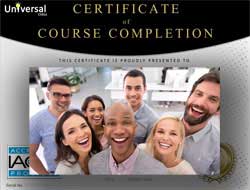
- Document Your Lifelong Learning Achievements
- Earn an Official Certificate Documenting Course Hours and CEUs
- Verify Your Certificate with a Unique Serial Number Online
- View and Share Your Certificate Online or Download/Print as PDF
- Display Your Certificate on Your Resume and Promote Your Achievements Using Social Media

Choose Your Subscription Plan
No Certificate / No CEUs
This course only
| Includes certificate | X |
| Includes CEUs | X |
| Self-paced |

|
| Instructor support |

|
| Time to complete | 6 months |
| No. of courses | 1 course |
Certificate & CEUs
This course only
| Includes certificate |

|
| Includes CEUs |

|
| Self-paced |

|
| Instructor support |

|
| Time to complete | 6 months |
| No. of courses | 1 course |
Certificates & CEUs
Includes all 600+ courses
| Includes certificate |

|
| Includes CEUs |

|
| Self-paced |

|
| Instructor support |

|
| Time to complete | 12 Months |
| No. of courses | 600+ |
Certificates & CEUs
Includes all 600+ courses
| Includes certificate |

|
| Includes CEUs |

|
| Self-paced |

|
| Instructor support |

|
| Time to complete | 24 Months |
| No. of courses | 600+ |
Student Testimonials
- "I thought this instructor was excellent! I learned so much from her and she presents things easily understandable and she communicates better than any other instructor I've had." -- Michele P.
- "This was a good course that I've already recommended to family." -- Barbara W.
- "She is awesome. She helped me a lot. Thank you very much." -- Saritha P.
- "Nancy you do a great job, thank you." -- Maria P.
- "Nancy Fillip was an excellent instructor." -- Lorne W.
- "I love taking the course and I've learned a lot." -- Jane L.
Related Courses
-
 30 hours
3.0 CEUs
Cooking Class Bundle: 5 Cooking Courses
$120.00
30 hours
3.0 CEUs
Cooking Class Bundle: 5 Cooking Courses
$120.00
-
 14 hours
1.4 CEUs
Candle Making 101
$95.00
14 hours
1.4 CEUs
Candle Making 101
$95.00
-
 4 hours
0.4 CEUs
How to Bake Cookies
$95.00
4 hours
0.4 CEUs
How to Bake Cookies
$95.00
-
 6 hours
0.6 CEUs
Pie Baking 101
$95.00
6 hours
0.6 CEUs
Pie Baking 101
$95.00
-
 5 hours
0.5 CEUs
Bread Baking 101
$95.00
5 hours
0.5 CEUs
Bread Baking 101
$95.00
-
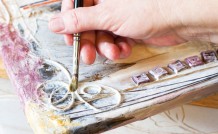 17 hours
1.7 CEUs
Mixed Media Art
$95.00
17 hours
1.7 CEUs
Mixed Media Art
$95.00
-
 10 hours
1.0 CEUs
Sewing 101
$95.00
10 hours
1.0 CEUs
Sewing 101
$95.00
-
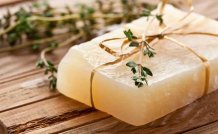 7 hours
0.7 CEUs
Soap Making 101
$95.00
7 hours
0.7 CEUs
Soap Making 101
$95.00
-
 4 hours
0.4 CEUs
Knitting 101
$95.00
4 hours
0.4 CEUs
Knitting 101
$95.00
-
 8 hours
0.8 CEUs
Digital Photography 101
$95.00
8 hours
0.8 CEUs
Digital Photography 101
$95.00
-
 6 hours
0.6 CEUs
Etiquette Consultant
$95.00
6 hours
0.6 CEUs
Etiquette Consultant
$95.00
-
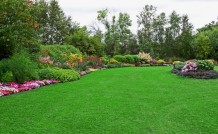 9 hours
0.9 CEUs
Landscaping 101
$95.00
9 hours
0.9 CEUs
Landscaping 101
$95.00
-
 14 hours
1.4 CEUs
Cake Decorating 101
$95.00
14 hours
1.4 CEUs
Cake Decorating 101
$95.00
-
 15 hours
1.5 CEUs
Western Calligraphy
$95.00
15 hours
1.5 CEUs
Western Calligraphy
$95.00
-
 7 hours
0.7 CEUs
Understanding Learning Styles
$95.00
7 hours
0.7 CEUs
Understanding Learning Styles
$95.00
-
 17 hours
1.7 CEUs
Photography 101: Beginner to Intermediate
$95.00
17 hours
1.7 CEUs
Photography 101: Beginner to Intermediate
$95.00
-
 11 hours
1.1 CEUs
Cooking and Baking 101
$95.00
11 hours
1.1 CEUs
Cooking and Baking 101
$95.00
-
 9 hours
0.9 CEUs
Watercolor Painting 101
$95.00
9 hours
0.9 CEUs
Watercolor Painting 101
$95.00




